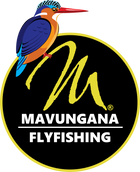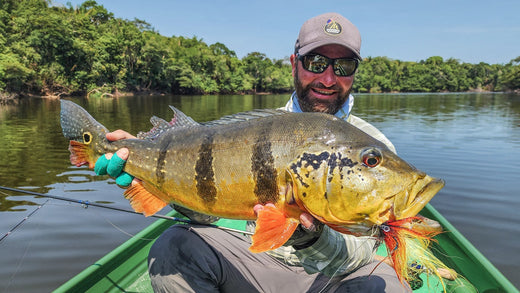Where does one start? A typical dilemma us guides face trying to explain our vision of the world we live in. The reason being that we are fortunate to see things on a daily basis that can't be transcribed to everyone else.
We just got home and my loved ones asked how it was, “insane” was my answer.
Maybe that was the best answer because you can interpret it in whatever way you want and every interpretation will hit the nail on the head. That is the Amazon, the jungle morphs into whatever you want it to be.
After extensive travel, we found ourselves in Manaus. Again being guides we don’t actually care about the man-made, yet we embraced the steepled history of this amazing city, the “gateway to the Amazon”. The Manaus Opera House, built in 1896, took us by surprise, just like a fish smashing your fly during a slow day. A third-world country that makes us South Africans sit back and realize that our home needs serious rework. We hung out at the petrol station a few meters from our hotel on a daily basis. We would walk in and order cases of local beer, every time a different colour. Then we would sit outside and watch the locals put in fuel, watch soccer on the TVs outside the shop, and just go on with their merry way of life. At night we would go to restaurants which once again made us rethink our beloved meat culture back home. We fell in love with picanha to the extent that the short walk to the hotel felt impossible.
A few days in, our actual trip was starting. The 14 of us stood in the small aircraft airport waiting to board the Cessna caravans which held the promise of transporting us to nirvana. Sweating, we stood for what felt like ages, yet it was a brief period of time and when looking back we all but forgot about it. We felt like farm Jack Russells just waiting for the bakkie to stop so we could jump off and chase whatever we desired.

Climbing onto the caravans, we realized the actual distance we were about to fly and it gave us butterflies, but that is the beauty and rawness of where we were going. 800 km of flying over broccoli fields of rainforest which were only interrupted by veins of tributaries that ultimately feed the almighty Amazon River. We crossed the significant, yet insignificant, Rio Branco and then caught a glimpse of where we would spend the next week. The illustrious Agua Bao.

Upon arrival, Carlos, the lodge manager, and all the amazing staff welcomed us to the Agua Boa Amazon Lodge with champagne. All the staff were wearing sharp whites which made us fishermen wearing Orvis button shirts and pants (I will still wear them to a wedding) feel like we wouldn’t be allowed into the party. A hurried lunch and throwing the contents of our bags across the cool and spacious rooms. Rods were stuck together, reels strung out and leaders were tied with a variation of aposematic coloured flies. Each of our guides would then cart our gear onto their shallow running boats.
Once we were ready we set off for our first taste of Amazonian jungle fishing. When we all reconvened again as the sun was setting, sitting in the pool drinking caipirinhas way too fast, we were broken. Wanker's cramp, stripper's claw, tennis elbow, and cheese grater thumb were a few of the names thrown around to explain each person's body ailments. We had just experienced five hours of fishing and it was safe to say we could already go home satisfied. The following morning anti-inflammatories, painkillers, and electrolyte sachets were handed out like drugs at Burning Man. Yet one could not see a sad face anywhere. We truly wondered if we would survive the next six full days of non-stop fish catching.

Each pair would fish with a different guide each day. The guides each have a zone that is kilometers long which they have spent their entire time at Agua Boa guiding. The knowledge they had of their water even made us hosts feel inferior about our guiding careers back home. From Val which has guided Zone 1 for five years, to Joseph which has guided Zone 7 for just over 30 years!!! Even though everyone would fish in each zone, the zones are so expansive and varied that almost everyone never fished in the same water.
The beauty of it all was that each day produced a different experience. The upper zones are intimate and confined where you fish off-shoot lagoons and the main river sight fishing. In the middle zones, you walk through the jungle, or jump in boats over logs, to get to Oxbow Lake which are aquatic islands hiding amongst the sea of green. While in the lowermost zones, the river expands and you can fish deeper eroded banks full of timber or slowly pole over the stark white sand islands mid-channel where you only cast to fish of significant size (you get overcasting to any fish you see because your arms will fall off).

Every day the river you got to experience was different. We tried to compare notes on spots amongst ourselves but it proved pointless as we each experienced something unique each day. The amazing thing about this place is that you can make each day what you want it to be, as technical as you want or not. You can just chase numbers and rack up a score which will challenge your counting or you can just cast flies the size of the over-flying macaws to big fish you can see in ankle-deep water. All of this while having an oppressive forest scenery, parrots, giant otters, and freshwater dolphins.
The Peacock Bass you catch on the Agua Boa are freshwater fish that don’t belong. The four types present are all different. The three spotted Orinoco provides hours of cast-for-cast fun, the vivid lime green Temensis are the wall hangers, the Paca fights to the end and breaks rods while the smaller Ocellaris are a surprise in the lower sections. They all eat hard, fight hard, and bewilder the eye. The Peacock Bass isn’t the only quarry though. Arowanas stalk the overhangs and vast sandbanks, a tricky fish. You will get many chances but the eyes-to-brain-to-arm connections aren’t fast enough to convert most of the eats. Shoals of Pacu species sip mid-river. Piranha make short work of your flies. Pike cichlids (Jacunda), Bicuda, and Oscars ambush small flies in the timber. One species did evade our group, the mighty Arapaima. The leviathans would roll boatside in the lagoons and bites were had but none stuck. I haven’t been scared of many fish in my life, but Arapaima makes me concerned. We had one swim straight under the boat which we mistook for a caiman for 1 second. Having seen a scaled fish weighing 100kg, this thing exceeded that, and when the guide said “sink your fly”, my prayers were answered and it never bit.

A highlight was always the lunch stops. The guide would find a shady overhang and park the boat against the side. A very welcome reprieve from the sun, casting, and humidity. Our gourmet sandwiches would come out but due to our fascination, we would give 50% of our food to the fishes. Throw a piece of bread/fruit into the water and you watch a freshwater ecosystem unlike any other come alive. The species of fish seen alone at each stop are pushing well past the dozen. Each day, each stop varies slightly in habitat and you see handfuls of different species to the day before. The heat tempts you to want to stand in the water and wade until you see freshwater stingrays of different flavours scattered all over the banks. With Agua Boa being a very clear water system, in Amazon terms, you truly are floating over an aquarium.
When our bodies got accustomed to the physicality of catching fish in this humid and hot environment it was time to climb back onto the caravans, it was time to leave this oasis hidden in an environment in which we aren’t meant to survive. We spent a few unexpected days in Sao Paulo, touring more restaurants and nightlife. Yet we couldn’t stop talking about what we experienced. If you weren’t taking part in the conversation, you had a 1000-yard stare in which the macaws flying across the jungle and the vivid green flash of a peacock taking your fly reflected off your eyes.
Report by Mike Dames

